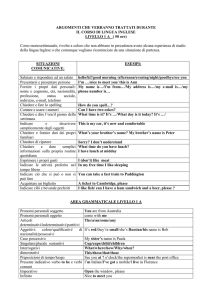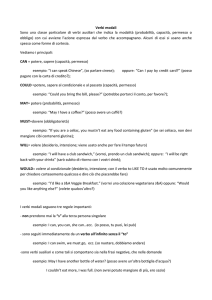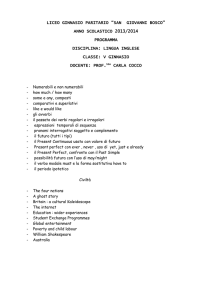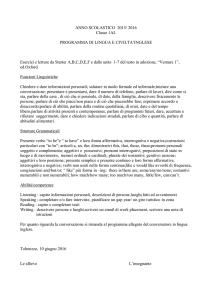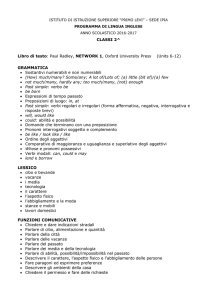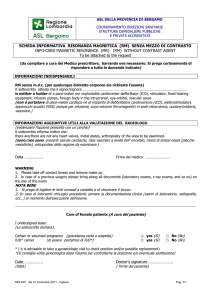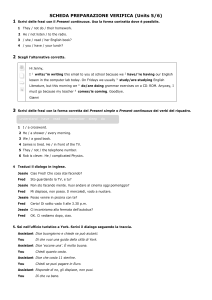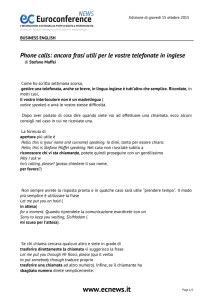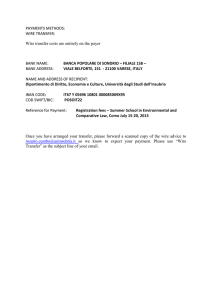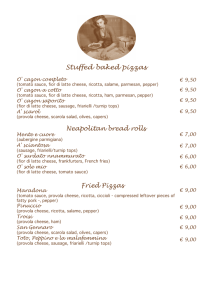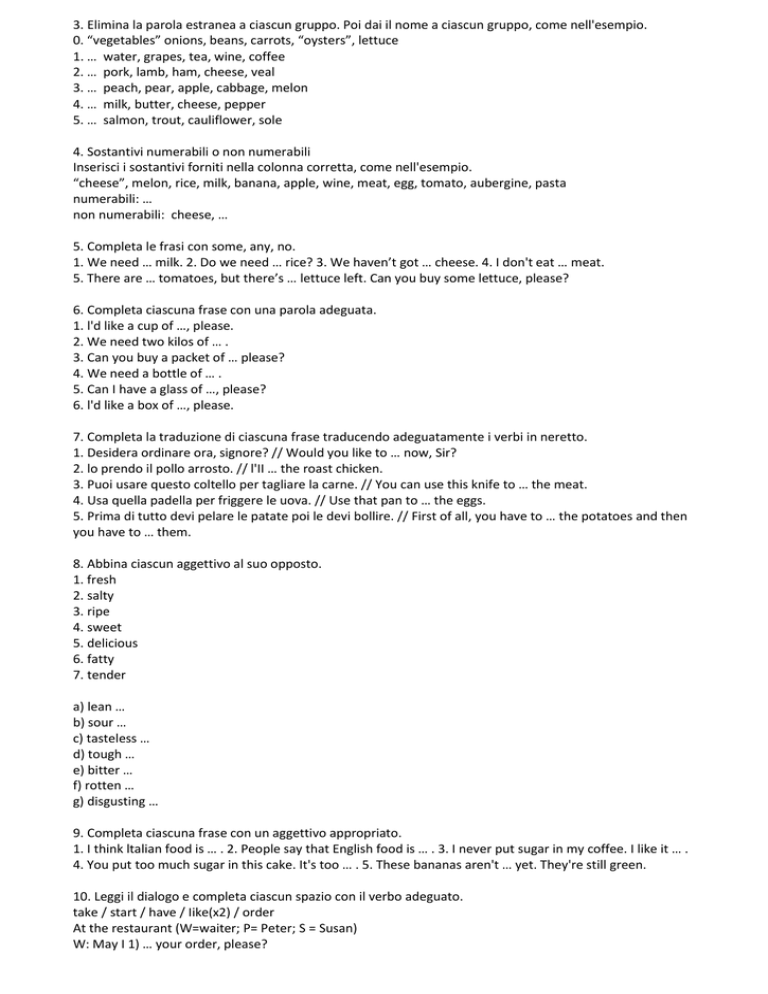
3. Elimina la parola estranea a ciascun gruppo. Poi dai il nome a ciascun gruppo, come nell'esempio.
0. “vegetables” onions, beans, carrots, “oysters”, lettuce
1. … water, grapes, tea, wine, coffee
2. … pork, lamb, ham, cheese, veal
3. … peach, pear, apple, cabbage, melon
4. … milk, butter, cheese, pepper
5. … salmon, trout, cauliflower, sole
4. Sostantivi numerabili o non numerabili
Inserisci i sostantivi forniti nella colonna corretta, come nell'esempio.
“cheese”, melon, rice, milk, banana, apple, wine, meat, egg, tomato, aubergine, pasta
numerabili: …
non numerabili: cheese, …
5. Completa le frasi con some, any, no.
1. We need … milk. 2. Do we need … rice? 3. We haven’t got … cheese. 4. I don't eat … meat.
5. There are … tomatoes, but there’s … lettuce left. Can you buy some lettuce, please?
6. Completa ciascuna frase con una parola adeguata.
1. l'd like a cup of …, please.
2. We need two kilos of … .
3. Can you buy a packet of … please?
4. We need a bottle of … .
5. Can I have a glass of …, please?
6. l'd like a box of …, please.
7. Completa la traduzione di ciascuna frase traducendo adeguatamente i verbi in neretto.
1. Desidera ordinare ora, signore? // Would you like to … now, Sir?
2. lo prendo il pollo arrosto. // l'II … the roast chicken.
3. Puoi usare questo coltello per tagliare la carne. // You can use this knife to … the meat.
4. Usa quella padella per friggere le uova. // Use that pan to … the eggs.
5. Prima di tutto devi pelare le patate poi le devi bollire. // First of all, you have to … the potatoes and then
you have to … them.
8. Abbina ciascun aggettivo al suo opposto.
1. fresh
2. salty
3. ripe
4. sweet
5. delicious
6. fatty
7. tender
a) lean …
b) sour …
c) tasteless …
d) tough …
e) bitter …
f) rotten …
g) disgusting …
9. Completa ciascuna frase con un aggettivo appropriato.
1. I think ltalian food is … . 2. People say that English food is … . 3. I never put sugar in my coffee. I like it … .
4. You put too much sugar in this cake. It's too … . 5. These bananas aren't … yet. They're still green.
10. Leggi il dialogo e completa ciascun spazio con il verbo adeguato.
take / start / have / Iike(x2) / order
At the restaurant (W=waiter; P= Peter; S = Susan)
W: May I 1) … your order, please?
P: Yes. To 2) … with I’ll 3) … the tomato soup.
S: Tomato soup for me too, please.
W: Certainly. And for the main course?
P: I’d 4) … the grilled fish.
S: And the roast chicken for me, please.
W: Would you 5) … something to drink?
S: Just water, please.
P: Red wine for me, please.
W: Very well. Would you like to 6) … your dessert, now?

